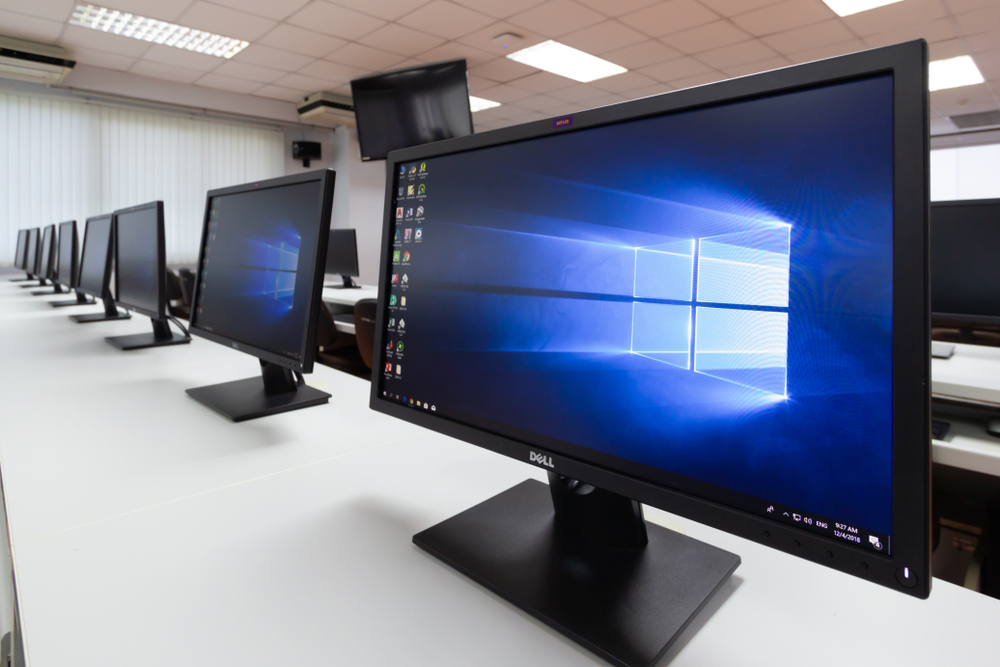Instructions on how to exploit Windows Print Spooler accidentally leaked after research blunder
Security firm releases a PoC exploit for a bug it thought Microsoft had already patched


Cyber criminals are abusing a severe Windows vulnerability just days after a security company inadvertently published a proof-of-concept (PoC) exploitation for this previously undisclosed flaw.
The vulnerability, nicknamed PrintNightmare, concerns the Print Spooler component in all Windows devices. It’s being tracked as CVE-2021-34527, and lets attackers install programmes, view, change or delete data, or create new accounts with full privileges on targeted devices.
Microsoft had initially fixed a flaw in the Print Spooler component on 8 June as part of its Patch Tuesday round of updates. At the time this was deemed a privilege escalation flaw and was tracked as CVE-2021-1675.
The firm then upgraded the severity of the bug from just privilege escalation to remote code execution on 21 June.
At the same time, researchers with the security firm Sangfor had been conducting their own research into Print Spooler vulnerabilities, which they were preparing to discuss at the forthcoming Black Hat cyber security conference in August.
Seeing that Microsoft had upgraded the bug's severity, the researchers assumed that it was the same flaw they had been working with and decided to publish the proof of concept for the exploit ahead of the conference, safe in the knowledge that it had been patched.
This remote code execution exploit, however, was for an entirely different Print Spooler weakness that hadn’t been previously disclosed by Microsoft, and used a different attack vector.
Get the ITPro daily newsletter
Sign up today and you will receive a free copy of our Future Focus 2025 report - the leading guidance on AI, cybersecurity and other IT challenges as per 700+ senior executives
Once this was established, the researchers quickly took down their work, but not before the exploit code was downloaded and republished elsewhere.
Microsoft has since warned businesses that hackers have seized upon this blunder and are targeting businesses with the flaw now known as CVE-2021-34527. Since it’s an evolving situation, Microsoft hasn’t yet attached a threat severity score to the bug.
“A remote code execution vulnerability exists when the Windows Print Spooler service improperly performs privileged file operations,” Microsoft wrote in a security advisory.
“An attacker who successfully exploited this vulnerability could run arbitrary code with SYSTEM privileges."
Until a patch becomes available, Microsoft has recommended that businesses either disable the Print Spooler service or disable inbound remote printing through their group policy.
The first mitigation would disable the ability to print locally or remotely, while the second workaround blocks the remote attack vector by preventing inbound remote printing operations. Local printing, however, will still be possible.

Keumars Afifi-Sabet is a writer and editor that specialises in public sector, cyber security, and cloud computing. He first joined ITPro as a staff writer in April 2018 and eventually became its Features Editor. Although a regular contributor to other tech sites in the past, these days you will find Keumars on LiveScience, where he runs its Technology section.
-
 Bigger salaries, more burnout: Is the CISO role in crisis?
Bigger salaries, more burnout: Is the CISO role in crisis?In-depth CISOs are more stressed than ever before – but why is this and what can be done?
By Kate O'Flaherty Published
-
 Cheap cyber crime kits can be bought on the dark web for less than $25
Cheap cyber crime kits can be bought on the dark web for less than $25News Research from NordVPN shows phishing kits are now widely available on the dark web and via messaging apps like Telegram, and are often selling for less than $25.
By Emma Woollacott Published
-
 Hackers are targeting Ivanti VPN users again – here’s what you need to know
Hackers are targeting Ivanti VPN users again – here’s what you need to knowNews Ivanti has re-patched a security flaw in its Connect Secure VPN appliances that's been exploited by a China-linked espionage group since at least the middle of March.
By Emma Woollacott Published
-
 Broadcom issues urgent alert over three VMware zero-days
Broadcom issues urgent alert over three VMware zero-daysNews The firm says it has information to suggest all three are being exploited in the wild
By Solomon Klappholz Published
-
 Nakivo backup flaw still present on some systems months after firms’ ‘silent patch’, researchers claim
Nakivo backup flaw still present on some systems months after firms’ ‘silent patch’, researchers claimNews Over 200 vulnerable Nakivo backup instances have been identified months after the firm silently patched a security flaw.
By Solomon Klappholz Published
-
 Everything you need to know about the Microsoft Power Pages vulnerability
Everything you need to know about the Microsoft Power Pages vulnerabilityNews A severe Microsoft Power Pages vulnerability has been fixed after cyber criminals were found to have been exploiting unpatched systems in the wild.
By Solomon Klappholz Published
-
 Vulnerability management complexity is leaving enterprises at serious risk
Vulnerability management complexity is leaving enterprises at serious riskNews Fragmented data and siloed processes mean remediation is taking too long
By Emma Woollacott Published
-
 A critical Ivanti flaw is being exploited in the wild – here’s what you need to know
A critical Ivanti flaw is being exploited in the wild – here’s what you need to knowNews Cyber criminals are actively exploiting a critical RCE flaw affecting Ivanti Connect Secure appliances
By Solomon Klappholz Published
-
 Researchers claim an AMD security flaw could let hackers access encrypted data
Researchers claim an AMD security flaw could let hackers access encrypted dataNews Using only a $10 test rig, researchers were able to pull off the badRAM attack
By Solomon Klappholz Published
-
 A journey to cyber resilience
A journey to cyber resiliencewhitepaper DORA: Ushering in a new era of cyber security
By ITPro Published